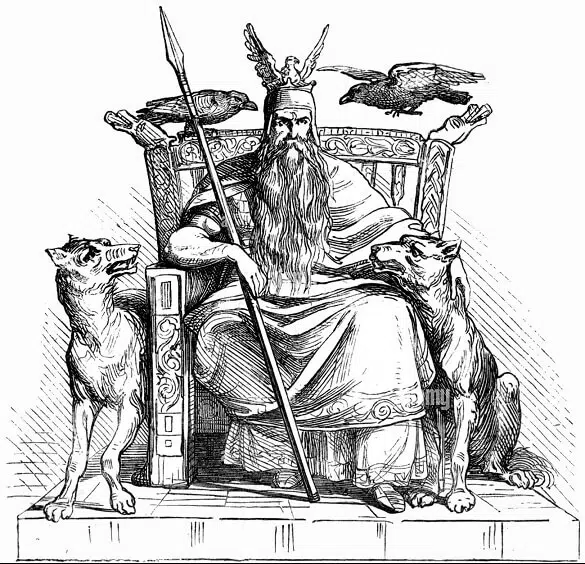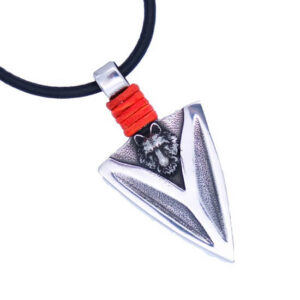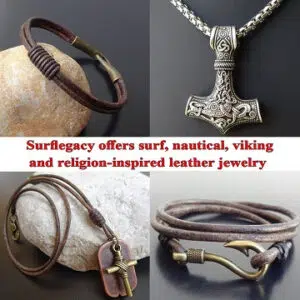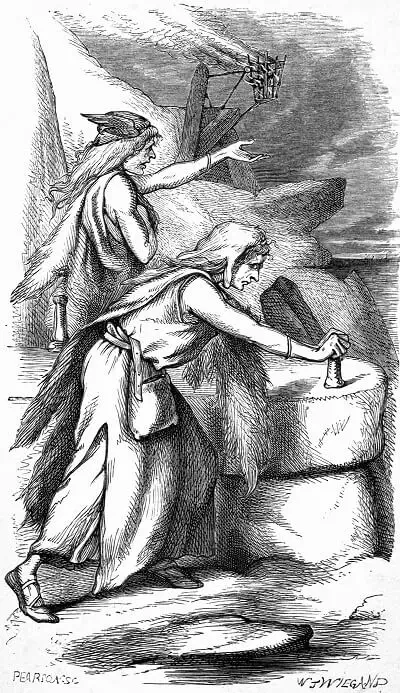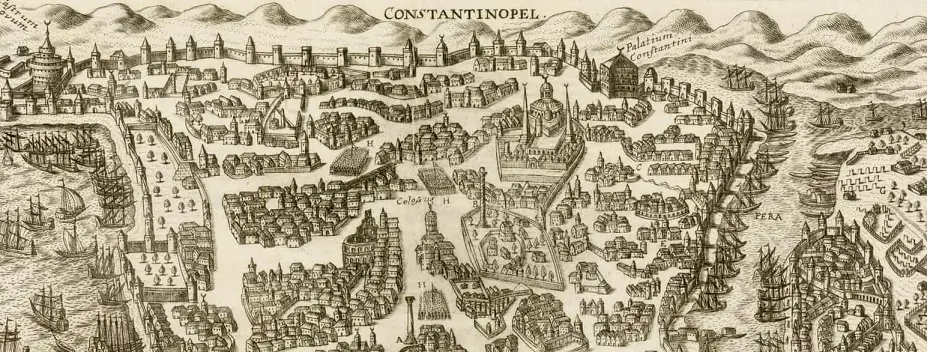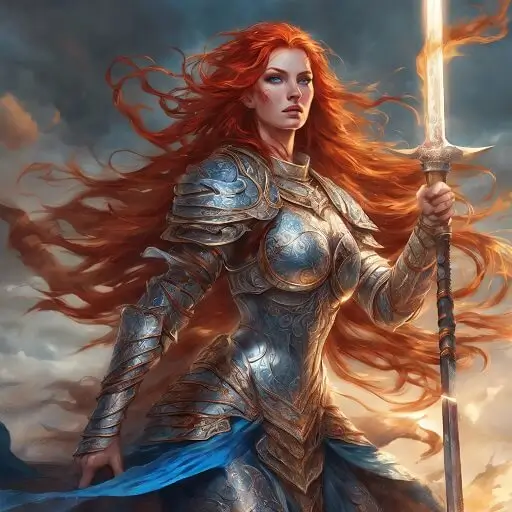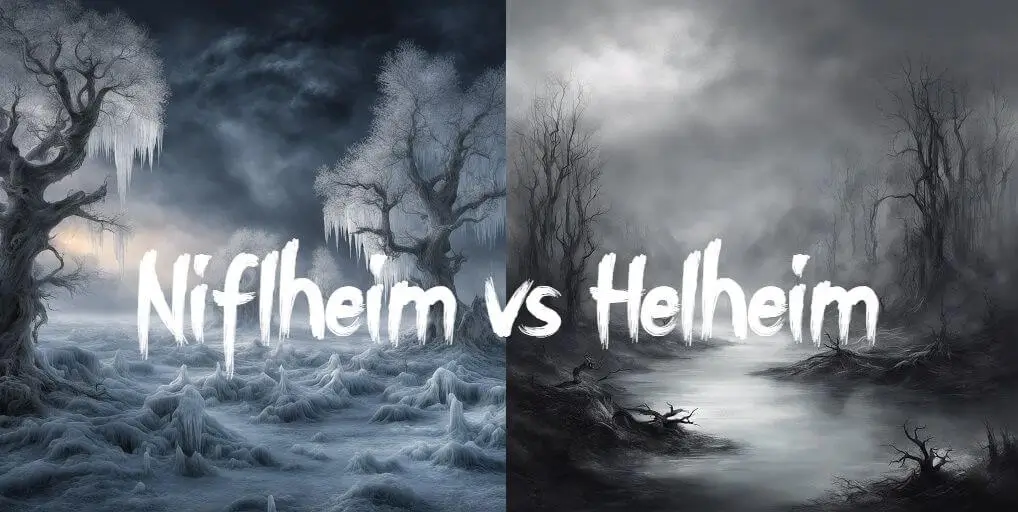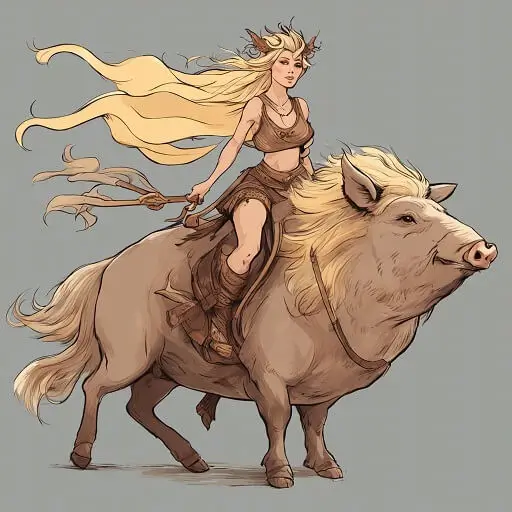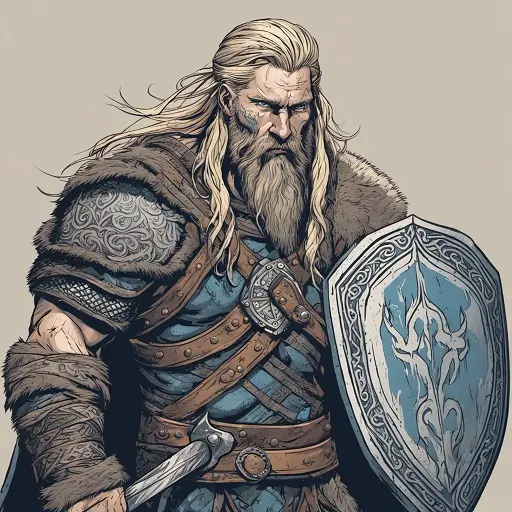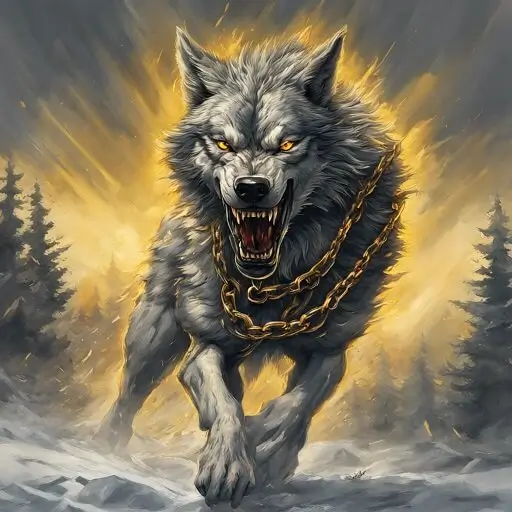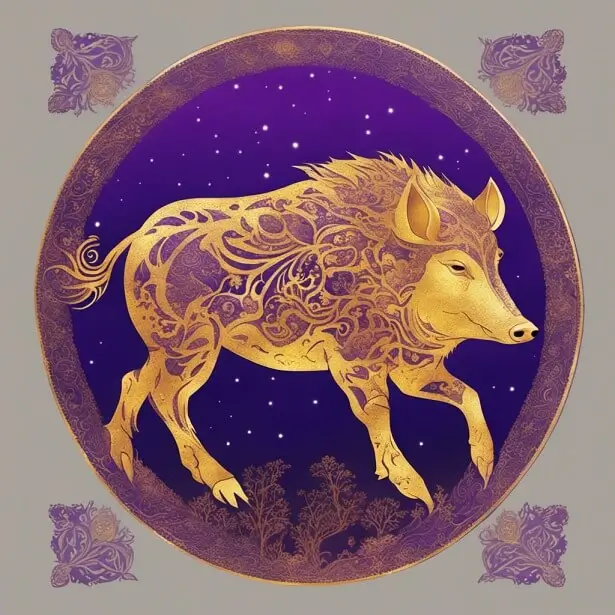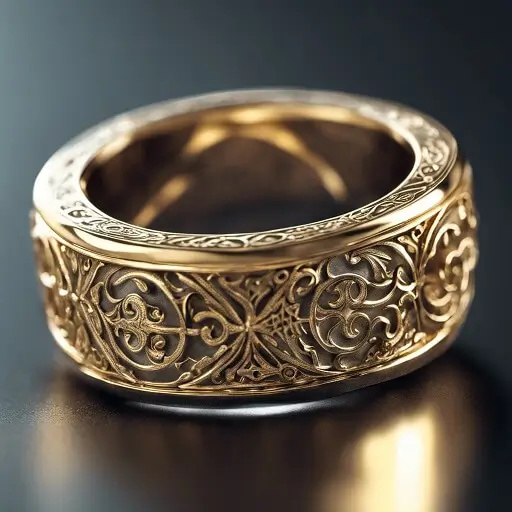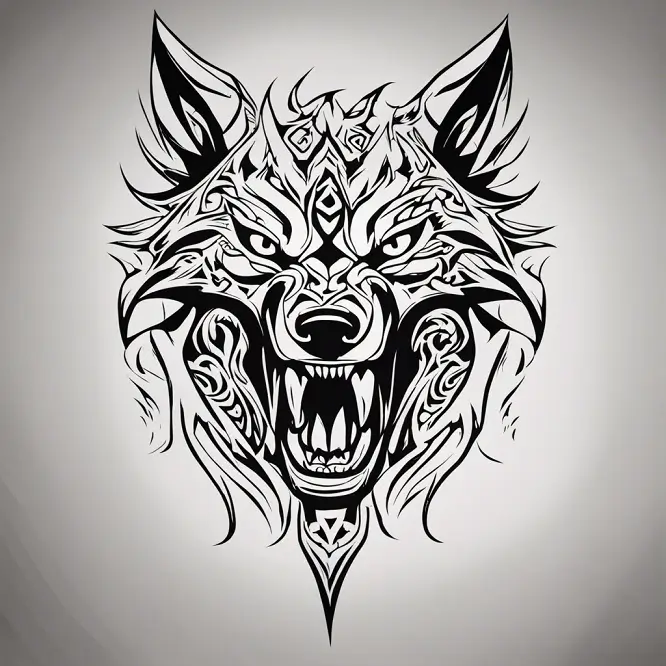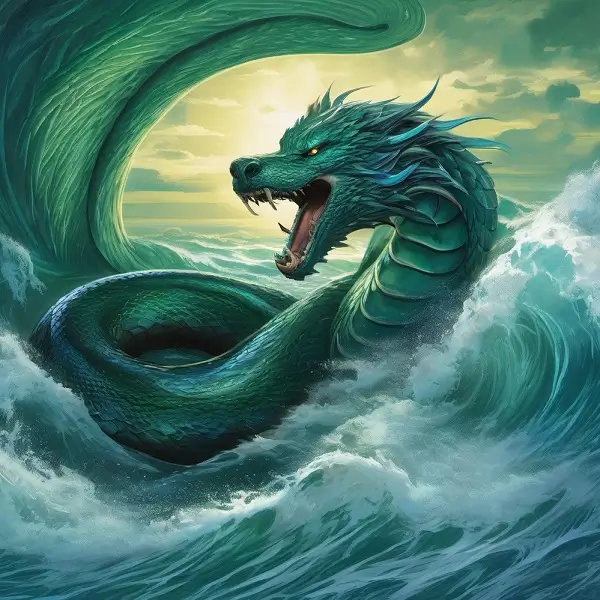The mythical wolves Geri and Freki hold a special place in the hearts of those who admire Norse mythology. As the loyal companions of Odin, the god of wisdom and war, these two wolves represent the values of loyalty and strength, embodying the warrior spirit that characterized the Vikings.
Odin and his two wolves shared an unbreakable bond, with the wolves not only keeping him company in Valhalla but also accompanying the god on his many adventures throughout the cosmos.
In today’s post, we’ll delve into the origins of these fascinating creatures, their significance within the Norse pantheon, and the enduring impact they’ve had on art, literature, and popular culture.
Geri and Freki meaning and pronunciation
Geri and Freki’s names can be understood to mean “the ravenous one” or “the greedy one.” Geri’s name originates from the Proto-Germanic adjective *geraz, which is found in Burgundian girs, Old Norse gerr, and Old High German ger or giri—all signifying “greedy.”
Geri and Freki are pronounced as follows:
Geri: GEH-ree (with a hard ‘g’ sound, similar to “get”)
Freki: FREH-kee (with a short ‘e’ sound, similar to “fresh”)
Freki’s name, on the other hand, has its roots in the Proto-Germanic adjective *frekaz. This term appears in Gothic 𐍆𐌰𐌹𐌷𐌿𐍆𐍂𐌹𐌺𐍃 (faihufriks) meaning “covetous, avaricious,” Old Norse frekr for “greedy,” Old English frec meaning “desirous, greedy, gluttonous, audacious,” and Old High German freh, which also means “greedy.” John Lindow sees both Old Norse names as adjectives turned into nouns. Additionally, Bruce Lincoln traces Geri’s origin back to a Proto-Indo-European stem *gher-, which is also found in Garmr—a name that refers to a hound closely linked to the events of Ragnarök.
Who Are Geri and Freki?
Geri and Freki are a formidable pair of wolves that hold a special place in the rich tapestry of Norse mythology.
These awe-inspiring creatures are not ordinary wolves, but divine beings that serve as constant companions to Odin, the chief of the Norse gods and the ruler of Asgard.
The duo embodies the essence of loyalty and ferocity, qualities that resonate deeply with Odin, who is known for his wisdom, cunning, and prowess in battle.
In the ancient tales, Geri and Freki often accompany their master on his journeys through the Nine Realms, engaging in epic battles, feasting in the great halls of Valhalla, and sharing Odin’s vast knowledge.
The stories of Geri and Freki reveal not only the close bond between the Allfather and his wolves but also the essential role these mythical creatures played in the Norse pantheon.
Through their adventures, Geri and Freki serve as powerful symbols of loyalty, courage, and the indomitable spirit of the Norse gods and their followers.
The Origins of Geri and Freki
The enigmatic wolves Geri and Freki can be traced back to the ancient Norse belief system, where they held great significance as loyal companions of Odin, the Allfather.
Their loyalty was mirrored by Huginn and Muninn, the two ravens that kept Odin informed about the happenings in the world. The ravens were said to find prey for feeding Geri and Freki, strengthening the bond between the wolves and their master.
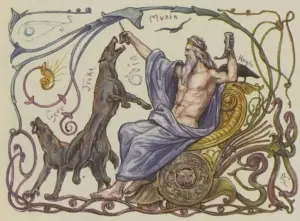
These appellations aptly capture the wolves’ insatiable hunger and ferocity, qualities that endeared them to the god of war and wisdom.
Geri and Freki make several appearances in Norse literature, including the Prose Edda and the Poetic Edda, as well as various sagas and Skaldic poems.
In these sources, they are often described as inseparable from Odin, accompanying him in battles, feasts, and his forays into the cosmos.
The tales of Geri and Freki not only highlight their role as Odin’s trusted confidants but also emphasize the deep connection between the Norse gods and the untamed natural world, an element that remains central to the enduring mystique of Norse mythology.
Geri and Freki’s Role in Norse Mythology
Geri and Freki’s presence in Norse mythology is deeply intertwined with their roles as Odin’s trusted companions.
Their unwavering loyalty and unmatched ferocity make them indispensable allies to the Allfather, who values their strength, wisdom, and intuition. As steadfast guardians and confidants, Geri and Freki accompany Odin on his many exploits through the Nine Realms, assisting him in battles, offering counsel, and sharing in his pursuit of knowledge.
The mythological tales featuring Geri and Freki emphasize their importance in the Norse pantheon. They are often depicted at Odin’s side in the great hall of Valhalla, where they serve as a symbol of the god’s power and authority.
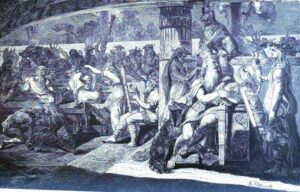
Valhalla by Zimmermann
In these stories, it is said that Odin feeds Geri and Freki the meat from his own plate, while he himself sustains himself solely on wine.
This act of generosity not only showcases the close bond between the Allfather and his wolves but also highlights the significance of sacrifice and selflessness in Norse culture.
Geri and Freki’s roles in Norse mythology extend beyond their partnership with Odin, as they also serve as symbols of the untamed forces of nature and the wild, independent spirit of the Norse people.
Their presence in the sagas and skaldic poems weaves a captivating narrative that continues to resonate with audiences today, shedding light on the enduring appeal of these mythical wolves and their place in the annals of Norse legend.
The Bond Between Odin and His Wolves
The unique relationship between Odin and his wolves, Geri and Freki, holds profound implications within the context of Norse mythology.
As the Allfather, Odin is revered for his wisdom, battle prowess, and mastery over the realms of life and death. His bond with Geri and Freki not only highlights his deep connection with the natural world but also symbolizes the virtues that were held in high esteem by the ancient Norse people.
Odin’s connection with Geri and Freki transcends that of a mere master and his loyal pets. They are his constant companions, embodying the qualities of strength, loyalty, and fearlessness, which resonate with Odin’s own attributes as the god of war and wisdom.
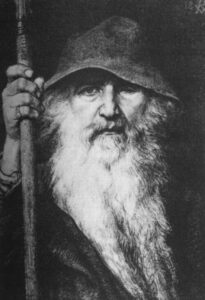
Odin
The presence of these mighty wolves at Odin’s side in various mythological tales and depictions serves to amplify his authority and reinforce his status as the supreme ruler of the Norse pantheon.
Moreover, the bond between Odin and his wolves symbolizes the inseparability of the natural world and the divine realm in Norse belief. Geri and Freki represent the untamed forces of nature, while Odin stands for the divine power that governs and shapes the cosmos.
Together, they form a harmonious union that speaks to the interconnectedness of all things in the Norse worldview.
Geri and Freki in Odin’s Daily Life
Geri and Freki’s daily lives revolve around their unwavering loyalty to Odin, the chief of the gods, as they accompany him in various aspects of his divine existence. In the great hall of Valhalla, where fallen warriors feast and prepare for the events of Ragnarok, Geri and Freki join Odin in the celebrations.
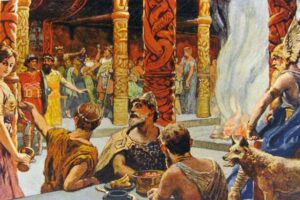
Valhalla by Emil Doepler
They partake in the feasting, with Odin generously offering them the meat from his own plate while he himself subsists on wine, symbolizing the deep bond and mutual trust between them.
Beyond the feasting, Geri and Freki share in Odin’s endless pursuit of knowledge. As they traverse the cosmos together, Odin imparts his wisdom to his loyal companions, ensuring that they remain an integral part of his divine endeavors.
In this way, the day-to-day lives of Geri and Freki reflect their unwavering commitment to their master and their unique role within the Norse pantheon.
Symbolism and Cultural Impact of Geri and Freki
Geri and Freki as Symbols of Strength and Loyalty
Geri and Freki, hold a special place in the hearts and minds of those who have been captivated by their tale. These mythical creatures, as companions of Odin, the god of war and wisdom, embody strength and loyalty, virtues that were highly esteemed in Norse culture.
The wolves’ ferocity in battle and unwavering devotion to their master have solidified their status as powerful symbols of the values that defined the ancient Norse people.
These qualities are evident in the myths and legends where Geri and Freki accompany Odin on his adventures, always by his side, ready to protect and serve him.
This enduring symbolism has transcended time and cultural barriers, with the spirit of Geri and Freki continuing to inspire and influence modern interpretations of Norse mythology.
As a result, the iconic duo has left an indelible mark on art, literature, and popular culture, reaffirming their position as timeless symbols of strength, loyalty, and the fierce independence that characterizes the Norse worldview.
Modern Interpretations and Influence
How Geri and Freki Continue to Inspire Art, Literature, and Popular Culture Today
Geri and Freki’s legacy as powerful symbols of strength and loyalty in Norse mythology has endured through the centuries, influencing various aspects of contemporary culture, from art and literature to film and beyond.
• Depictions in modern art and tattoos: The iconic duo has become a popular subject for artists who draw inspiration from the rich tapestry of Norse mythology. Geri and Freki are often depicted alongside Odin, showcasing their unwavering loyalty and highlighting the deep bond between them. These artistic representations are not limited to traditional mediums, such as painting and sculpture; they have also found their way into body art, with tattoos featuring the mythical wolves gaining popularity among enthusiasts who wish to embody the virtues of strength, loyalty, and fierce independence.
• Influence on literature and film: Geri and Freki’s tale has continued to captivate authors and filmmakers, inspiring various adaptations and reinterpretations in literature and on screen. In addition to their presence in retellings of Norse myths, such as Neil Gaiman’s “Norse Mythology,” the wolves have also influenced the creation of original characters and storylines in historical and fantasy fiction. The popular television series “Vikings” and the video game “God of War” are prime examples of contemporary media that have incorporated elements of Geri and Freki’s legend, as well as the broader Norse mythos, into their narratives.
Conclusion
The mythical wolves Geri and Freki have left an enduring impact on Norse mythology and beyond. As the loyal companions of Odin, they symbolize loyalty, strength, and wisdom. Their importance in human origins, nurturing the first humans, and guiding fallen warriors to Valhalla highlights the integral role they played in the Norse belief system.
The connection between Odin and his wolves extends to the wolf god, emphasizing the significance of these creatures in Norse culture. Their presence in art, literature, and archaeological finds demonstrates the lasting influence of these legendary wolves.
Geri and Freki’s story, along with the tales of Odin’s ravens Huginn and Muninn, exemplifies the divine connection between the god of wisdom and war and his loyal companions. Their timeless narrative serves as a reminder of the rich heritage and indomitable spirit that characterize the Norse worldview.

